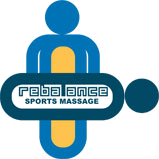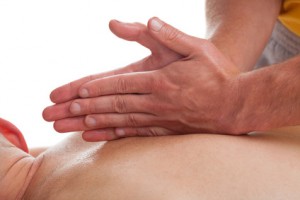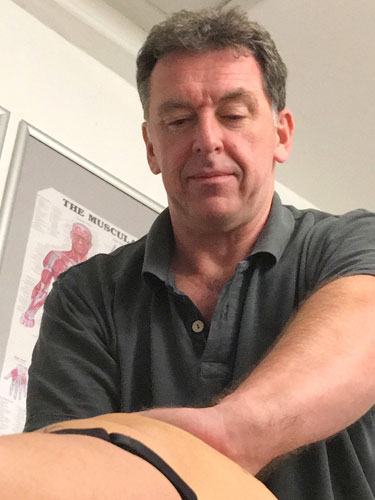Massage Techniques
Massage therapists may use combinations of any of the following techniques using their fingertips, knuckles, hands, elbows and forearms.
Effleurage (stroking), petrissage (kneading), tapotement (percussion), squeezing, frictions, rocking, shaking, soft tissue release, muscular energy techniques, myofascial release, trigger point therapy, acupressure, energy balancing, muscle testing and lymphatic drainage.
What is effleurage?
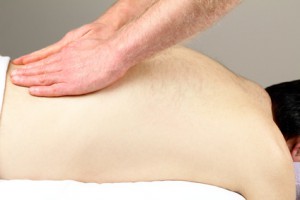 The word effleurage derives from the French word, effleurer, which means ‘to skim’. It is a form of massage involving stroking movements with the hands sliding over the skin, and is always used at the beginning and end of as well as in between other techniques during a massage session. The stroking technique of effleurage may be used with varying pressure and speed according to the purpose and stage of the massage. Effleurage includes light stroking, firm stroking and deep stroking
The word effleurage derives from the French word, effleurer, which means ‘to skim’. It is a form of massage involving stroking movements with the hands sliding over the skin, and is always used at the beginning and end of as well as in between other techniques during a massage session. The stroking technique of effleurage may be used with varying pressure and speed according to the purpose and stage of the massage. Effleurage includes light stroking, firm stroking and deep stroking
Effleurage should be carried out in a smooth, rhythmical and relaxed manner, starting with a light touch at the start of a session and building up to deeper pressure with slower movements for increased circulation and stretching of the tissues later. The hands must be relaxed and follow the natural contours of the client’s body. The technique should not be rushed as you need time to identify and focus on any abnormalities in the tissue that may require further attention later in the session. Quick movements will not help the client relax, and if a tender area is missed it will almost certainly be more painful if discovered later when using deeper techniques such as petrissage.
What does effleurage achieve?
The aims of effleurage are to:
- Introduce touch to the client
- Put the client at ease
- Warm the superficial tissues
- Relax the muscles
- Allow the practitioner to palpate and sense the condition of the tissue
- Stimulate the peripheral nerves
- Increase lymph and blood flow, and thus aid the removal of waste products
- Stretch tissues
- Relax a client before the end of the massage.
What is petrissage?
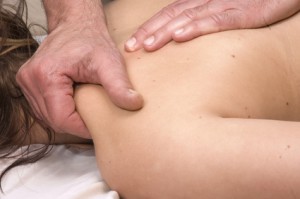
Petrissage comes from the French word, pétrir, which means ‘to knead’. The basic petrissage movement is to compress and then release the soft tissue, using either direct pressure or by picking up and squeezing the skin and muscle.
Petrissage is generally used to have a deeper effect on soft tissue than effleurage, and includes kneading, squeezing, picking up, shaking (and other techniques described as wringing and rolling, which achieve much the same results).
What does petrissage achieve?
The aims of petrissage are to:
- Increase mobility between tissue interfaces
- Stretch muscle fibres
- Aid the interchange of tissue fluids
- Increase venous and lymphatic return
- Relax muscles
- Aid the removal of waste products
Tapotement
Tapotement describes techniques such as hacking and cupping which have their place in massage aimed towards relaxation. Hacking is a technique in which both hands alternately strike the skin with the lateral borders of the fifth finger of each hand. As the other fingers close together on striking the skin, a characteristic sound is made. It is known to stimulate the skin and superficial muscle tissue, preparing the muscle for exercise and hence being an option for pre-competition massage. Cupping involves making an air-tight concave shape with the hand so that, as it strikes the surface, the air caught underneath is compressed, creating a vibration that penetrates the tissues.
Tapotement is a technique, which involves rhythmic tapping or patting of the soft tissue structures, commonly administered using a cupped hand or striking with the outside edge of the hand. Tapotement increases circulation, warms and loosens the soft tissue so is able to prepare individuals for exercise and also recover from physical exertion.
Frictions
Frictions are small forceful movements applied back and forth over isolated areas using the pads of the fingers or thumbs – utilising considerable pressure compared to the techniques described so far. They are applied adjacent to the direction of fibres and hence, are often referred to as ‘cross-fibre’ frictions. Several benefits of frictions may be generated by using deep stroking instead; the subtle difference between the two techniques being slightly less pressure and therefore no disruption caused.
What do frictions do?
The aims of frictions are to:
- Separate adhesions between fibres
- Break down scar tissues
- Restore elasticity
- Stimulate vaso-dilation and blood flow
- Stimulate the healing process
- Realign new scar tissue
Soft Tissue Release (STR)
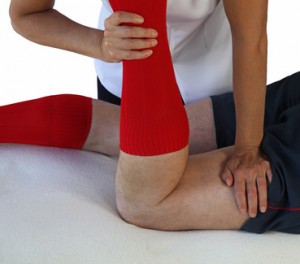
STR is a remedial technique, which aims to stretch and lengthen soft tissue structures such as muscles and tendons. STR is designed for individuals suffering from tightness within these soft tissue structures, and unlike conventional stretching techniques, STR localises a stretch to specific areas of tightness. This is accomplished by applying pressure or ‘Lock’ to a shortened muscle, which creates a temporary origin for the muscle, effectively shortening the actual length of the muscle. Moving the joint it works across then lengthens the muscle, this provides a stretch from the temporary origin of the muscle to its insertion.
Muscle energy techniques (MET)
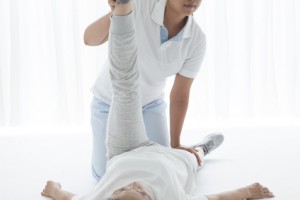
MET, is a further remedial massage technique that is aimed towards individuals with tight and shorten muscles, with decreased ROM. MET involves contracting the affected muscle a number of times, whilst applying a stretch to the particular muscle. MET is a mild form of stretching so is effective during rehabilitation from an injury. Correct application of MET can increase joint mobility and strengthen weakened muscles.
Neuromuscular techniques (NMT)
NMT is a specialised remedial massage technique, which manipulates soft tissue by applying continued static pressure to balance the nervous system. Pressure is applied to specific ‘trigger points’ within the muscle, which is often a specific area of pain and can refer pain to another part of the body. In normal bodily function slow nerve impulse bring about movement however if the nervous system is not functioning as it should, nerve impulses speed up, increasing the risk of pain and dysfunction of soft tissue. NMT aims to maintain the normal function of the nervous system.
Myofascial Release
Myofascial Release used when working with posture related problems and injuries. This treatment works on the myofascial tissues which form tendons, support and form muscles, support our internal organs. The myofascial system can be 'snagged' by injury or 'pulled' by bad posture - imagine the effect of a pulled stitch in a sweater. Myofascial Release works on this system to warm up and allow the fabric of the body to slowly return towards its former elasticity.
Trigger point Therapy
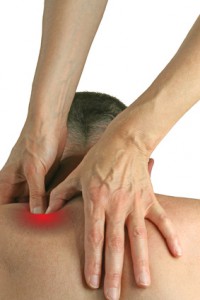
Trigger point therapy techniques are based around focused compression on hyper-irritable spots usually within a taut band of skeletal muscle or its fascia that gives rise to referred pain and tenderness. The purpose of trigger point therapy is to eliminate pain and to re-educate the muscles into pain-free habits. After several treatments, the swelling and stiffness of neuromuscular pain is reduced, range of motion is increased, tension is relieved, and circulation, flexibility and coordination are improved. While the application of pressure on this spot causes the discomfort to become very clearly recognisable, it has the dual and counter-intuitive effect of feeling good at the same time.
Acupressure
Acupressure is a form of touch therapy that utilizes the principles of acupuncture and Chinese medicine. In acupressure, the same points on the body are used as in acupuncture, but are stimulated with finger pressure instead of with the insertion of needles. Acupressure is used to relieve a variety of symptoms and pain.
Energy Balancing
A general term for any form of alternative healthcare that seeks to restore the balance of “life energy” by moving, unblocking or balancing life forces over the physical, energetic and spiritual body. Energy balancing therapies include acupressure, acupuncture, Bach flower remedies, healing, homeopathy, polarity therapy, reiki, reflexology and therapeutic touch.
Muscle Testing and Balancing
If a muscle is electrically in balance, it is possible to measure a constant electrical signal from the brain to that muscle and back again, much the same as two faxes 'talking' to each other.
However, when the body is overstressed (through a chemical, emotional, structural or electrical cause), the electrical signals in one or more muscles go weak. It is like a fuse in your fuse box blowing. The body figures that it is better to blow a fuse than the whole thing.
This is the basis of muscle testing, which is the main tool used in kinesiology. For example, if a person has a particular muscle in their arm 'out of balance' (as we say), then they will not be able to hold their arm in a certain position when the kinesiologist applies pressure to it.
This is particularly significant when you realise that many different parts of the body are in communication with many other parts of the body. That is,
Muscles communicate with muscles
Muscles communicate with organs
Organs communicate with muscles
Organs communicate with organs
In the above example, the muscle itself may have been weakened. However, if it is the particular muscle that communicates with the stomach, the muscle may be weak because the stomach is out of balance.
In another example, a person may have a weak bladder because their bladder is out of balance. However, the bladder communicates with the ankle muscles and therefore a weak bladder may have been caused by weak ankle muscles. (This has been shown in kinesiology when people with incontinence have stopped needing to go to the toilet after their ankle muscles have been rebalanced). It is virtually impossible to completely heal the body without taking the whole picture into account.
Lymphatic Drainage
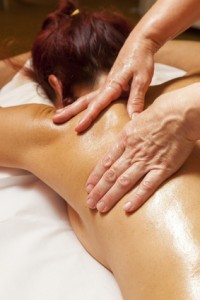
A type of contemporary Western massage, developed in France in the 1930s by Danish physical therapist Dr E Vodder, consisting of various manipulations intended to stimulate the lymphatic drainage of various organs and tissues. Manual lymphatic drainage aims to eliminate bacteria, toxins, viruses, wastes and excess water, and addresses blocks in lymphatic circulation, which may cause congestion and peripheral oedema. Four basic techniques are employed: stationary circles, pumping, rotation and scooping, which are followed by stroking the tissues toward the sites of normal lymphatic drainage. Manual lymphatic drainage has been used for various conditions, including acne, arthritis, oedema, inflammation and sinusitis.
To book your treatment session with Russ Cassidy, sports massage and deep tissue massage therapist, call on 07709 509713, or book online. Alternatively you can send a message.
